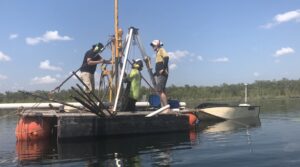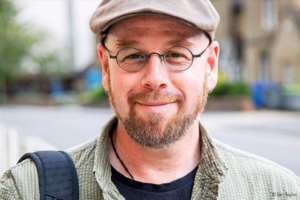New Study Unveils Indigenous Fire Management Practices in Northern Australia
A study delving into the history of fire patterns in northern Australia’s tropical savannas has shown that frequent, low-intensity fires indicating seasonal Indigenous fire management became dominant in the Top End at least 11,000 years ago.
The study has also highlighted how the cessation of Indigenous fire management following European arrival is linked to an increase in the occurrence of devastating wildfires.
The study, authored by a team at the Australian Research Council Centre of Excellence for Australian Biodiversity and Heritage (CABAH) and published in Nature Geoscience, establishes that a change in fire regime from sporadic high-intensity, lightning-ignited wildfire to cool, human-ignited fires, occurred at least 11,000 years ago.

CABAH Chief Investigator Distinguished Professor Michael Bird from James Cook University said the team collected an 18-metre core encapsulating a 150,000-year environmental record from Girraween Lagoon on the outskirts of Darwin in the Northern Territory to investigate the influence of Indigenous management on fire regimes and ecosystem dynamics in northern Australia.
“The Girraween core stands out as a rare, long-term, climate record spanning both the time before and after people arrived in Australia at least 65,000 years ago, and we developed detailed pollen records of vegetation and charcoal and paired them with geochemical records of climate and fire to reveal how fire patterns have changed,” said Professor Bird.
“These new records demonstrate that Indigenous fire management greatly modified the local environment from at least 11,000 years ago, and potentially much earlier.”
Today, Girraween Lagoon is subject to the northern Australian monsoon season and is surrounded by a tall and relatively dense tree canopy with a thick, tall grass understory in the wet season. The lagoon is a culturally significant site for the Larrakia and Wulna peoples. It also holds a place in popular culture as the filming location for a scene in the movie Crocodile Dundee.
Although its appeal for researchers like palaeoecologist Dr Cassandra Rowe (CABAH/JCU) is that it’s a natural sediment trap.
“Girraween Lagoon is actually a sinkhole—it’s an anomaly and perfect for this type of study because it has a protected, bowl-like shape, created when the porous rocks underneath collapsed. Sediments that allow us to trace changes in vegetation, climate and fire patterns have accumulated and fossilised through the ages, which is unusual for this part of the country.”

Data gleaned from the Girraween Lagoon core show that around 115,000 years ago and again 90,000 years ago when Australia was dotted with gigantic inland lakes, the lagoon expanded into a large, shallow depression surrounded by lush monsoon forest with almost no grass.
During the last ice age, 20,000 to 30,000 years ago, when sea levels were low, and the site where Darwin now sits was more than 300 kilometres from the coast, the lagoon shrank and was surrounded by open, grassy savanna with fewer, shorter trees.
As the climate began to resemble modern conditions at least 11,000 years ago, fires became more frequent but of lower intensity, and the fire regime shifted from natural to human-managed.
Professor Bird said: “Pinpointing the transition from a sporadic, high-intensity, natural fire regime to a human-managed one characterised by frequent, low-intensity fires also highlights that in the absence of Indigenous fire management, savanna fires tend to return to their previous state of being larger and more intense when lightning served as the sole ignition source.”

Co-author Professor Corey Bradshaw of Flinders University said the study underscores the need to reintegrate traditional practices to combat the escalating threat of wildfires globally.
“While southern fires in recent years have been particularly damaging, more than two-thirds of these fires occur during the dry season in the tropical savannas that cover approximately two million square kilometres of northern Australia, or around one-quarter of the country’s total land area.
“The shift to a European fire regime, characterised by larger and more intense fires in the dry season, has disrupted a biodiversity balance that was maintained for more than 11,000 years. This abrupt change has not only harmed biodiversity, it has also increased greenhouse gas emissions.
“Reinstating Indigenous fire practices, as seen in initiatives like the West Arnhem Land Fire Abatement project, is vital for restoring ecological balance and mitigating future wildfire catastrophes,” Professor Bradshaw said.

